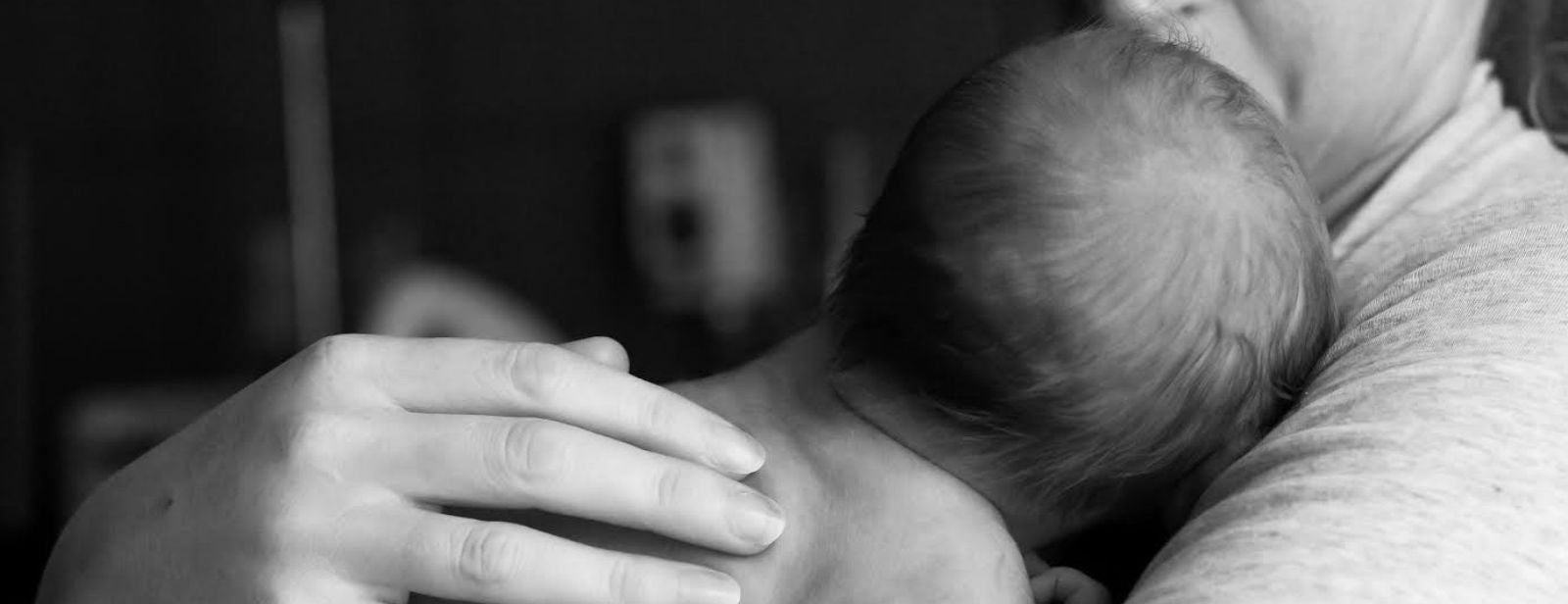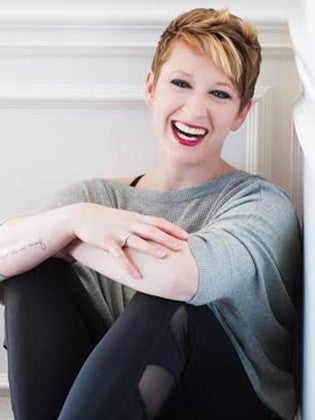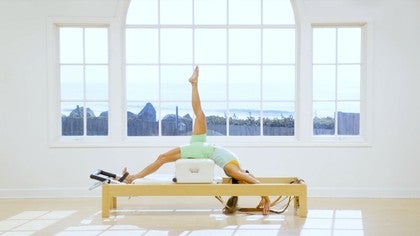
A Pilates Teacher's Journey Through Infertility
“What if we continue to try to get pregnant naturally?” said my husband. “Well, at this point, you have a 1% chance of conceiving without intervention. “ said the doctor. “What about all of those people who you hear about - the miracles?” I said. “Jenna, they don’t have your numbers….”
Infertility is a disease of the reproductive system. One third (30%) of infertility can be attributed to male factors, and about one third (30%) can be attributed to female factors. In about 20% of cases infertility is unexplained, and the remaining 10% of infertility is caused by a combination of problems in both partners.
At 35 years old, I, passionate, healthy Jenna Zaffino was diagnosed with infertility due to early onset menopause and premature ovarian syndrome. If you had asked me in my twenties whether or not I thought I would ever have fertility issues, I would have said “HELL NO! I’m young and healthy and no one in my family has had issues.” If you had asked me in my early thirties whether or not I thought I would have fertility issues, I would’ve said “HELL NO! I can name Every. Muscle. Of. The. Pelvic. Floor. I’ve taught prenatal Pilates classes for over a decade and already decided long ago that I would birth my child with a combination of deep hip flexion and percussive breathing. “
My role as a Pilates professional and devotee gave me a false sense of security as it pertained to conceiving a child. My proficiency in movement and understanding of the body made a devastating diagnosis that much harder to believe and I rejected it for as long as I could until I couldn’t escape the truth:
My body was not able to make a baby without medical intervention and the possibility for success was less than 5%.
Imagine if someone told you that a basic human function was not available to you and that you would have to endure countless medical treatments with no guarantee of success. It was daunting. I was used to practicing hard until the choreography, exercise or the essay was correct. I can do hard things. I can excel at hard things, but this? For someone who considered the use of her body to be her livelihood, this felt like betrayal. In the words of Dr. Brene Brown, “Guilt is the feeling that you made a mistake and shame is the feeling that you ARE a mistake.” This felt like shame. I feared that people would think I was “doing sex wrong.” Or not trying hard enough. Or that some behavior like birth control pills or lack of meditation or too much meditation or not totally being on board with the Indian guy who rubbed some corn on my head had kept me from being one of the chosen women who got to be pregnant and have a family. Like. I. Did. Something. To. Deserve. This.
Infertility is a major life crisis for 1 in 8 couples. For these women and men fighting the disease of infertility, the infertility experience involves many hidden losses for the individuals, their loved ones and society as a whole, including:
- The Ronald O. Perelman and Claudia Cohen Center for Reproductive Medicine at Weill Cornell Medical College
- Loss of the pregnancy and the birth experience;
- Loss of the parenting experience;
- Low feelings of self-worth;
- Loss of a sense of spirituality and sense of hope for the future.
As I prepared to begin the first of many treatments with many, many needles, I turned to my practice for solace and strength. I committed to supporting myself through movement as the doctors helped my hormones and my ovaries to function. I dove into research about a supportive movement for fertility treatments but had a secret agenda – I wanted to use the movement from the inside out to “fix” my infertility. I found through my research that women who are engaged in a regular exercise program yielded a higher percentage of pregnancy. In addition, women who maintained a regular exercise regime were said to have healthier pregnancies and in some cases, easier labor and deliveries. This was great news – exercise was a great thing to support the functions of a women’s body! Imagine if Pilates could help “fix” me? I painstakingly searched for the answer and found a gaping void on the subject of Pilates and fertility. There wasn’t a movement program to “fix” my problem – because movement cannot fix infertility.
So there it was. I could not be fixed through movement – what a sucker punch. It was just after this discovery that my husband and I sat down to meet with our RE (reproductive endocrinologist). I was to start my injections and I was to stop exercising. Pilates? No – no abs. Cardio? No over-stressing the body. Resistance Training? Definitely not. Receiving these restrictions felt like being put into lockdown, handing my body over at the gates and holding on for dear life to my heart. There had to be something I could do. This felt like too many “No’s.”
One after another, my cycles came and went without success. I continued to teach, scared that if I demonstrated small movements, I would “mess something up.” I hoped that “movement through osmosis” was a thing. But the truth is, I felt myself drifting away slightly, paralyzed not only with the fear that I would never be a mother, but the fear that when all was said and done, I would have forgotten how to engage with my body at all.
The space that was once filled with movement had become filled with fear – about movement, about the process, and about the outcome. There was an indescribable void in my life and also in the way I began to perceive myself. I began to wonder if the void might be due to a lack of exploration, rather than a lack of options and I started asking my doctor questions. “How do you feel about breathing exercises? What about gentle ROM for my joints? Walking? Can I show you a few of the movements that we do in the foundational work to see if these are ok?” Turns out, there were more options than I originally thought. I found that one of the major risk factors for a vigorous movement program was due to something called OHSS – Ovarian Hyperstimulation Syndrome. This could happen when the ovaries have a more than positive response to the stimulation drugs that are used to make the follicles that reside inside the ovaries produce mature eggs. Too much of the hormone in the system can make the ovaries swollen and painful, resulting in rapid weight gain and abdominal pain.
With a resting follicle count of 4 (this is very low) I had no risk factor for OHSS and while there were still precautions, I had a renewed vision of what my movement practice could be. With my doctor’s permission, I began to move again - gently. My teacher Ron Fletcher taught us the tenet: “Breath is movement.” I began with breath. I focused on exercising my breathing apparatus and creating space in my body, which in turn, resulted in space in my mind. I finally had something that I could DO! It felt better.
At this point, I was into the second year of my treatments and my body was beaten up. Injections and hundreds of ultrasounds had left their mark on my tissues and I had to be mindful of how I navigated through my joint range movements. When a body is stressed and cycling through periods of hormone stimulation for ½ of the month and rest for the other ½, the movement needs to offer support as opposed to contributing to stress. It was an experiment of presence, listening and responding to my body. Moving during these times was a tango between my wants and my needs. The space between the two was necessary and the skill of awareness that we learn to cultivate as Pilates people took on a new tagline – awareness without judgment. It was a simple exercise of identifying “what is” and responding in a way that would honor the body’s state at that time. No more “fixing.” No more worry. Move for connection, move for space, move for relief and move for life.
When I was given my body back after our final cycle, it was bruised, tight and in need of a good recalibration, but something was definitely different. Somewhere in the midst of dropping percentages and levels of hope, my body, once paralyzed with fear had found the strength to incubate the smallest of miracles. She was tired and still had a long fight ahead of her that was full of hurdles and anxiety. This time, however, she had a little help from the tiny heart that had started to beat inside of her.
I waited so long to announce my pregnancy – 22 weeks in. I wanted to be open with my story because I had been in support groups and had heard the stories of grief and loss, seen the tears and held hands with women who were just like me. Whether or not we had matching diagnoses, they were just like me. The outpouring of support was unexpected and overwhelming in a positive way. I had struggled with the fear of judgment but felt the love of my colleagues in Pilates community as they rooted for my husband and I. I received many private messages of admission from teachers who had gone through similar processes to make their family, thanking me for bringing light to the subject. However, I was unprepared for the tsunami of messages from professionals who were lost, just like I had been. Professionals who had posted on FB forums for Pilates teachers and received ridicule or criticism for their “kegel technique.” There were some who didn’t understand the precautions and some who were just plain scared of what this meant for their bodies and their practice. The stories left a horrible feeling in the pit of my stomach. No one had the answers because the questions had not yet been explored: “How do I support a client who is going through infertility treatments?” We ask it about osteoporosis, cardiac issues, autoimmune conditions, pregnancy and even cancer. Why aren’t we asking it about infertility?
The truth is, we as Pilates professionals are drawn to outcomes that have positive results – that’s what wellness is: behavior that results in an elevated quality of life and livelihood. We love success stories, before-and-afters, epic tales of rising up through adversity and how Pilates plays a role in the recovery process. It is not our job to “fix” infertility. It is not our job to counsel our clients throughout this process. But, empathy is part of the human condition.
Can you imagine what it might be like to work with an expert who had a reference point for what you might be engaging into medically and could offer a session that would allow you to breathe your breath and move your joints to stay connected to yourself? We watch them as they come into the studio. We listen to them as they speak their hellos and we consider the movements that might best support their mindset and their body’s needs for that day. If they have osteoporosis, we do this in a way that avoids flexion and loading the spine and promotes weight-bearing and balance activities. If they are pregnant, we do this in a way that avoids dangerous postures for a changing pregnant body and supports a mother who is preparing for the main event of labor and delivery. We can do this for clients dealing with infertility through awareness, education and empathy. We can offer a safe place for gentle movement and support and we can do this within our scope of practice.
I am now the mother of a two-year-old miracle who is, for all intents and purposes, a regular two-year-old boy. I teach at my studio and present continuing education courses throughout the country. I have adopted the mantra “Giving it is how I keep it” and this year was named Director of Support Services for Shine Chicago, a non profit organization in Chicago that provides education, support and advocacy to bring light to the issues that plague families dealing with infertility. My work with women who are navigating through infertility treatments holds a special place in my heart. They view our Pilates sessions as a “mental vacation” from the anxiety surrounding their diagnoses. We focus on preparing their body to begin a cycle through alignment and conditioning sessions. We practice supportive movements that help to lessen areas of stress that injections place on the body. We transition with a gentle mindset if a cycle results in a pregnancy and we practice reconnection for the cycles that do not. The breath heals. The movement heals. At the end of the day – it’s the spirit of Pilates that heals. The key is, with education, there are options.
This year, I “conceived” a continuing education course for teachers to learn how to safely support their clients through the infertility process. It is another example of my mantra and is my attempt to fill the void with awareness. We cannot fix infertility through movement, but through gaining awareness of the disease and treatments, we can offer our clients a lifeline throughout the process and beyond. I believe in movement. I believe in empathy. I believe in support and I believe in miracles. Join me in the continued quest to offer safe support through movement.
To read more from my fertility blog, go to scaredfertile.com
To find out more about “Safe Support for Clients Diagnosed With Infertility” contact me at coachjz@jennazaffino.com
If you are struggling to conceive a child, resolve.org and shinechicago.com are wonderful resources for fertility information and infertility advocacy.
Comments

You need to be a subscriber to post a comment.
Please Log In or Create an Account to start your free trial.













